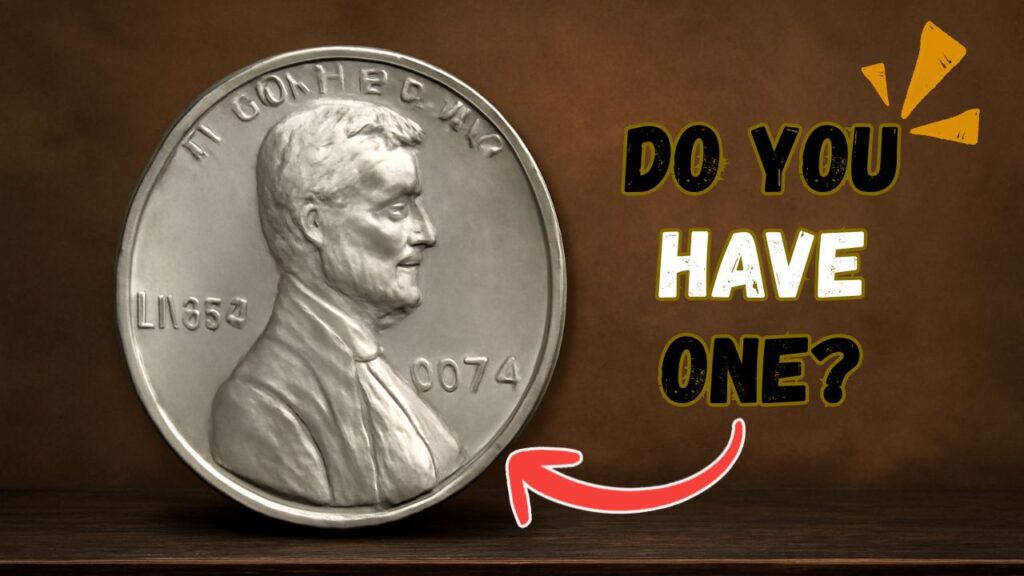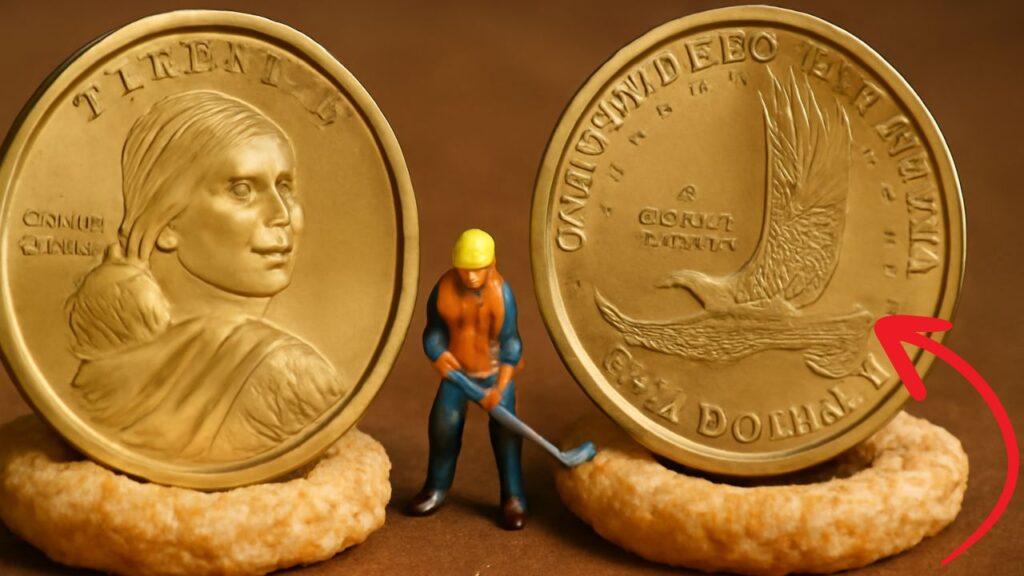The 1877 Indian Head cent, often simply called the 1877 Indian Head penny, is widely acknowledged as the key date of the Indian Head cent series. With a recorded mintage of just 852,500, it ranks among the rarest circulation strikes of the entire 1859–1909 run.
In high-grade, original red or red‑brown specimens, this humble one-cent coin can fetch $10,000 or more, with elite examples exceeding $100,000 at auction.
This article explores every critical fact and figure: its mintage, survival estimates, grading tiers, market values, identifying characteristics, and why it has captivated collectors for generations.
Historical Background & Mintage
- The Indian Head cent series was minted from 1859 to 1909, designed by James B. Longacre. The bronze composition (95% copper, 5% tin/zinc) was adopted in 1864, remaining constant through the 1877 issue. The weight is ~3.11 g, with a 19.05 mm diameter and plain edge.
- In 1877, the Philadelphia Mint struck 852,500 coins—one of only two Indian Head issues with fewer than a million pieces (the other being 1909‑S, mintage: 309,000).
- Numismatic experts question the full accuracy of that mintage figure. Given typical die life limits, only one reverse die is known, and there’s minimal evidence of die wear—leading many to believe the official figure may be inflated and actual circulation release could have been under 200,00.
Why It Became the Key Date
- Though the 1909‑S has a lower mintage, over time far more of those have survived in collections. The 1877 cent, by contrast, survives in far fewer numbers, especially in higher grades—making it the most sought-after key date in circulated Indian Head cents.
- PCGS describes it as “unquestionably the most desirable coin in the entire circulation-strike Indian Cent series”.
Estimated Survivors & Population
- Survivor estimates vary, but collectors universe threads suggest that perhaps no more than ~5,000 1877 cents survive today, with only around 10% in uncirculated condition.
- PCGS population data: ~6,581 certified coins in circulated grades, and 1,206 certified in Mint State (approximately 200 Brown, 476 Red‑Brown, and 91 Red).
- No examples are certified MS67; the finest known is a PCGS Red MS66+ (“Golden Princess”).
Market Value by Grade & Color
The value of a 1877 Indian Head cent escalates dramatically depending on grade and color designation.
| Grade / Color | Typical Auction Value | Remarks |
|---|---|---|
| Good (G‑4) / Fine (F‑12) | $500–$900 | Heavy wear, but date legible |
| Very Fine (VF‑20) / EF‑40 | $1,300–$2,500 | Better detail, moderate wear |
| AU‑50 | $2,500–$3,100 | Minor wear on high points |
| MS‑60 Brown | ~$5,000 | Uncirculated, brown surfaces |
| MS‑63 Brown / RB | $5,000–$8,750 | Partial red luster, eye appeal |
| MS‑63 Red | ~$7,500 | Strong detail and some original red |
| MS‑65 RB | $15,000–$18,000 | Major red‑brown presence |
| MS‑65 Red | ~$30,000 | Outstanding red color and strike |
| MS‑66 Red / MS‑66+ Red‑Brown | $90,000–$150,000+ | Rare “gem” condition examples |
- Low-grade coins (Good to Fine) typically trade around $500–$900
- Average Uncirculated (MS‑60 to MS‑62 Brown) specimens often sell for around $5,000 to $7,700.
- MS‑63 Red examples have sold around $7,500; MS‑65 Red‑Brown coins fetch $15,000–$18,000; MS‑65 Red and MS‑66+ Red‑Brown can command up to $30,000.
- The elite MS‑66 Red and MS‑66+ RB examples have realized $90,000 to $149,000+, including one MS‑66 RD that sold for ~$114,000 in February 2025.
Identifying Authenticity & Key Features
- Weak strike: Genuine 1877 cents were struck lightly. Key areas—like the date and “ONE CENT” letters—often appear soft or incomplete. Counterfeits often exhibit overly sharp strike and bold detail.
- Color classification matters:
- Brown: original chocolate patina; common.
- Red‑Brown (RB): partial original red surfaces; more desirable.
- Red (RD): full original red with strong luster; exceedingly rare and commanding high premiums.
- Certification: Only accept coins certified by reputable grading services (e.g. PCGS, NGC), and beware of “altered dates” or overdates, especially misrepresented “1877” modifications.
Why the 1877 Indian Head Cent Commands Such Premiums
Several factors explain its enduring appeal and astronomical values:
- Ultra‑low mintage: One of only two Indian Head cents under one million; official figure of 852,500.
- Low survivor population: Numismatic consensus suggests under 5,000 survivors; only ~10% in uncirculated condition.
- Historic collector demand: Recognized as the premier key date since the late 19th century—many collectors intentionally saved theirs, further thinning the supply in circulation.
- Grading sensitivity: Value escalates sharply within grading tiers; original red color (MS‑65/66 RD) dramatically increases market price.
- Auction performance: Modern auction records show that top‑tier specimens sell for figures previously unimaginable—often exceeding $100,000.
Key Statistics at a Glance
| Aspect | Detail / Figure | Significance |
|---|---|---|
| Year | 1877 | Key date year |
| Official Mintage | 852,500 | Extremely low for the series |
| Estimated Survivors | ~5,000 total | Scarcity across all grades |
| Certified Mint State (PCGS) | ~1,206 pieces | Very rare condition levels |
| Proofs certified in Mint State | ~91 (Red), ~476 RB, ~200 Brown | Highlights rarity of Red examples |
| Good–Fine Value | $500–$900 | Circulated common condition |
| AU / VF Value | $1,300–$3,100 | Moderate wear with clarity |
| MS‑63 RB / Brown Value | $5,000–$8,750 | Quality uncirculated specimens |
| MS‑65 RB / Red Value | $15,000–$30,000 | High‑grade premium condition |
| MS‑66+ Red Value | $90,000–$150,000+ | Museum‑quality rarity coin |
The 1877 Indian Head cent remains the undisputed key date of the series—a humble bronze cent with one of the lowest recorded mintages and surviving populations in U.S. coinage.
From modest circulated values of $500–$900, the price scale skyrockets into the mid-five-figure range for premium uncirculated examples, and across six figures for the rarest red specimens certified at MS‑66.
Collecting or investing in this series demands careful attention to strike quality, color authenticity, and grading integrity. When represented in Original Red or Red‑Brown and certified in high grade, the 1877 Indian Head cent can truly be worth its weight in treasure.
FAQs
Why is the 1877 Indian Head cent considered the key date of the series?
Because of its exceptionally low mintage (852,500) and very small number of survivors—especially in uncirculated grades—it represents the most coveted normal-strike key date in the Indian Head series.
Can a circulated 1877 cent really be worth $500 or more?
Yes. Even heavily worn coins with the date clearly visible (Good to Fine grades) regularly trade in the $500–$900 range due to extreme collector demand.
Which grade and color command $10,000+ values?
Only Mint State coins in high quality—typically MS‑65 Red‑Brown (approx. $15,000–$18,000) and MS‑65/66 Red (about $30,000 or more) regularly top $10,000. The rarest MS‑66+ Red‑Brown or Red examples have sold for over $90,000–$150,000.



